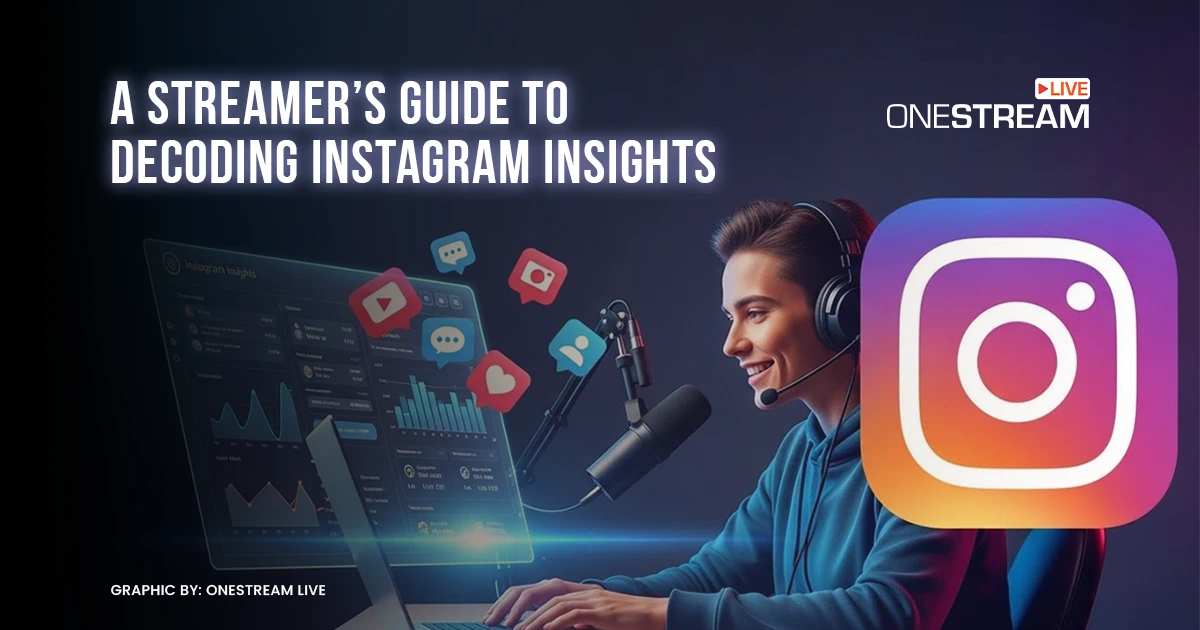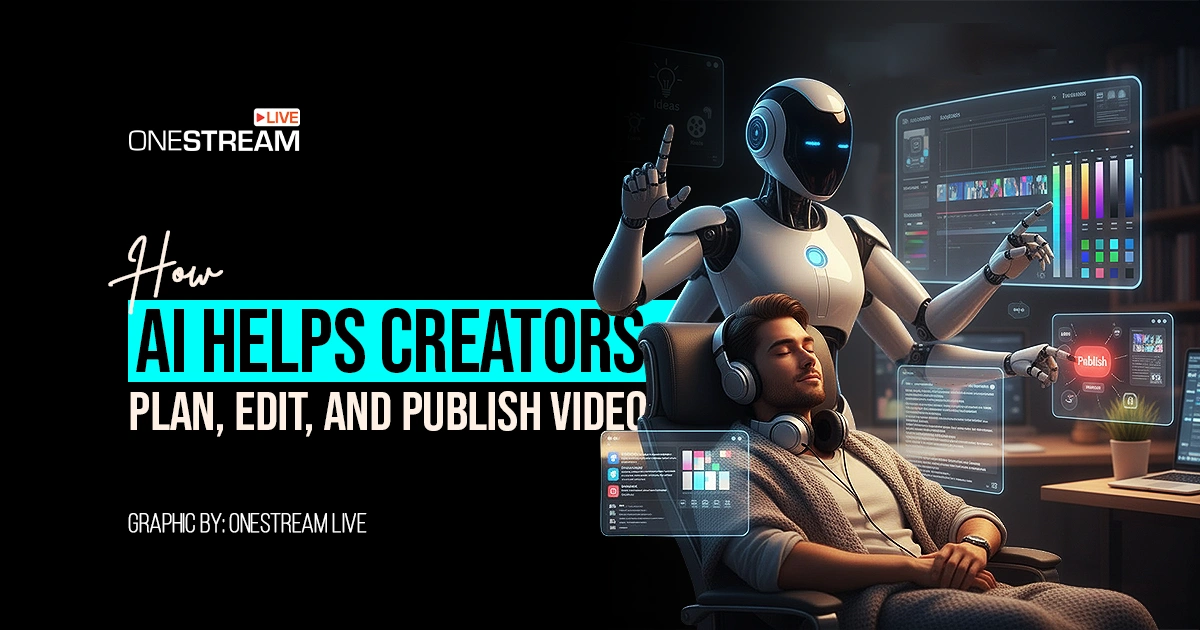Among other things, modern worship has also gone digital. Church members no longer need to be in a pew to access their Sunday sermons. Thanks to safe online church streaming platforms, faith communities can meet online to worship.
Yet, with this shift comes a crucial question: how do churches ensure that services remain accessible to everyone?
Through game-changing accessibility features like closed captions and multilingual support, church streaming is breaking down barriers. Let’s dive into why accessibility matters, what it looks like, and the first challenges churches must overcome to create an inclusive streaming service.
Why Accessibility in Church Streaming Matters
Church is a place for everyone — regardless of origin, disability, or language. Yet, for those who are hard of hearing, visually impaired, or non-native speaking, accessing church services can feel exclusive.
WHO research suggests that by 2050, nearly 2.5 billion people will have some form of hearing loss. So, when you offer accessibility options for church streaming, you’re not just reaching more people but making worship a more inclusive experience.
Also check out the Top 6 Features for Church Live Streaming with OneStream Live
5 Game-Changers for Accessibility in Church Streaming
1. Closed Captions
Closed captions aren’t just for movies and TV anymore. Research suggests that around 85% of social media is watched with the sound off. In the same way, church streaming services can benefit from including closed captions.
Closed captions help various churchgoers:
- Individuals with hearing difficulties;
- Those with permanent hearing impairments;
- Anyone watching in noisy environments;
- People learning a language.
Review and edit your captions post-service to ensure accuracy. Faith-based vocabulary is often misinterpreted by AI (“Jesus” becoming “cheeses” is not ideal).
2. Multilingual Support
Countries worldwide are becoming melting pots of language and diversity, and so are churches. Offering multilingual support for church streaming makes all the difference for non-native speakers.
Thanks to inclusive streaming platforms, integrating multilingual support has never been easier or more accurate. Many provide translation tools for real-time subtitles or even multilingual audio dubs.
Prioritize the most common languages of your congregation to start with and ensure theological and linguistic accuracy.
3. Sign Language Interpretation
While closed captions can appeal to those in the deaf community, many rely on sign language as their main mode of communication. Including a live sign language interpreter in your stream is a powerful inclusion for accessibility.
Sign language interpretation can be a little tricky at first, but there are a few ways to implement it seamlessly:
- Use the picture-in-picture layout so the interpreter is visible in the main feed;
- Alternatively, designate a space in the sanctuary for the interpreter;
- Only use certified sign language interpreters with knowledge of faith-based vocabulary.
4. Audio Descriptions
Worshippers with visual impairments can feel immersed in church streaming with engaging audio descriptions. Most audio descriptions can be arranged ahead of time during rehearsals to ensure seamless delivery. Provide real-time narration for:
- Rituals;
- Gestures;
- Text or imagery;
- Visual effects.
These inclusions massively enhance the worship experience for visually impaired viewers. Find a narrator with a good understanding of your service structure and style to provide the most meaningful audio descriptions.
5. User-Friendly Streaming Platforms
When it comes to church streaming, choosing a platform that balances ease of use with robust accessibility features is paramount. While closed captions, multilingual support, sign language interpretation, and audio descriptions each play a vital role, having a streamlined, intuitive interface helps ensure that every member of your congregation—tech-savvy or not—can participate.
One platform that excels in these areas is OneStream Live. It offers multistreaming to numerous social channels at once, which is perfect for reaching a diverse audience. Churches can schedule pre-recorded sermons or broadcast events in real time, enabling you to integrate closed captions and multilingual support smoothly.
Moreover, its user-friendly dashboard simplifies setup for interactive elements like sign language interpretation windows and audio descriptions. With additional perks like custom branding, advanced analytics, and team management, OneStream Live elevates your church streaming and ensures an inclusive and engaging experience for all worshippers.
Overcoming The Accessibility Challenge
At first, implementing accessibility features can seem daunting. However, breaking down the process into manageable steps can make the process seamless. Let’s look at three key strategies:
1. Start Small — Aim Big
Build a plan that includes your end goals for accessible church streaming. Begin with adding captions to pre-recorded sermons with automated subtitling tools.
After gathering feedback from your audience, slowly ramp up to translations, audio descriptions, and sign language interpretation. Once you feel confident, work your way into accessibility options on live streams.
2. Community-Powered Accessibility
A church’s greatest resource is its congregation. Members are usually very eager to offer their skills in service of the church.
Identify individuals with tech expertise and linguistic skills to assist with the process of developing accessibility bit by bit.
3. Embrace Easily Scalable Technologies
Build a strong ground base of technologies when you start. Choose an intuitive streaming platform and set up a VPN router for secure streams.
To begin, it helps to pick a streaming service with built-in accessibility features, illegal content moderation, and multi-platform streaming capabilities. These choices set your stream up for easy scalability in the future.
Also read Pros, Cons, and Everything You Need to Know About VPN Live Streaming
Wrap Up
Accessibility isn’t about adopting new technology — it’s about empowering your diverse congregation through inclusivity.
By integrating support for multiple languages, disabilities, and tech capabilities, all members of your congregation feel like they belong.
Accessibility is the very future of digital worship. So, what’s your next step?
OneStream Live is a cloud-based live streaming solution to create, schedule, and multistream professional-looking live streams across 45+ social media platforms and the web simultaneously. For content-related queries and feedback, write to us at [email protected]. You’re also welcome to Write for Us!












